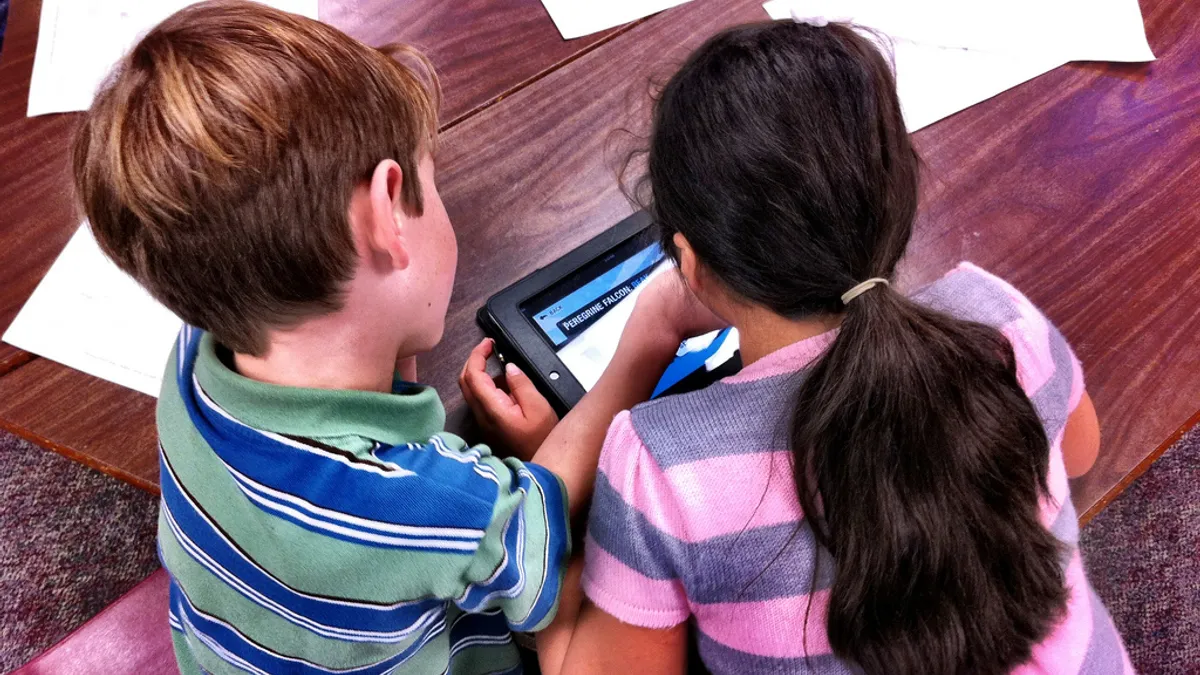Dive Brief:
- The International Society for Technology in Education's (ISTE) recently released guidelines regarding computational thinking may help students learn science, technology, engineering and mathematics (STEM) skills no matter what class they’re taking, according to EdTech: Focus on K-12, which notes the framework is aimed at helping teachers find ways to bring the approach into any classroom.
- There are five roles teachers need to play, according to the framework, for computational thinking instruction: learner, equity leader, collaborator, designer and facilitator. Getting advice from colleagues, nurturing students' self-confidence, and incorporating collaborative and hands-on projects are among some of the recommended steps educators can take in leveraging this curriculum in their classrooms.
- Computational thinking doesn't have to be the main focus of a class to be successfully taught, Eric Anderson, a Wisconsin charter school math instructor, told ISTE in an October news release. And, as the EdTech article cites, ISTE says teachers who have implemented these practices agree on STEM's role in giving students the skills they need for the future.
Dive Insight:
Even before ISTE's Computational Thinking Competencies standards for K-12 schools were announced, computational thinking's approach to problem-solving caused some to consider it as the fifth “C” of 21st century skills, alongside critical thinking, creativity, communication and collaboration.
Computational thinking starts with breaking down an issue into smaller parts, then identifying patterns and using those understandings to craft a simple solution. And while teaching the increasingly popular subject of computer science, for instance, is partially about getting students to code, it's also about fostering their computational thinking skills — which experts call an upside in promoting clear and precise thinking. As students look for critical solutions, they're forced to tap into a creative mindset that examines the possibility of multiple ways to find the answer — a theme that fits in well with trends of increased student autonomy and flexible curriculum models.
One might tend to associate computational thinking with computer science and math, but it can also be used to find patterns and solutions in any subject. Take an art class, for example, which can incorporate computational thinking when looking at proportions and spacing for creative projects. Or consider music lessons that can tap into the role math plays in composition. As ISTE emphasizes, educators and administrators should employ the framework "across all disciplines and with students of all ages," and using the organization's agenda is one step educators can take in making that goal a reality.













